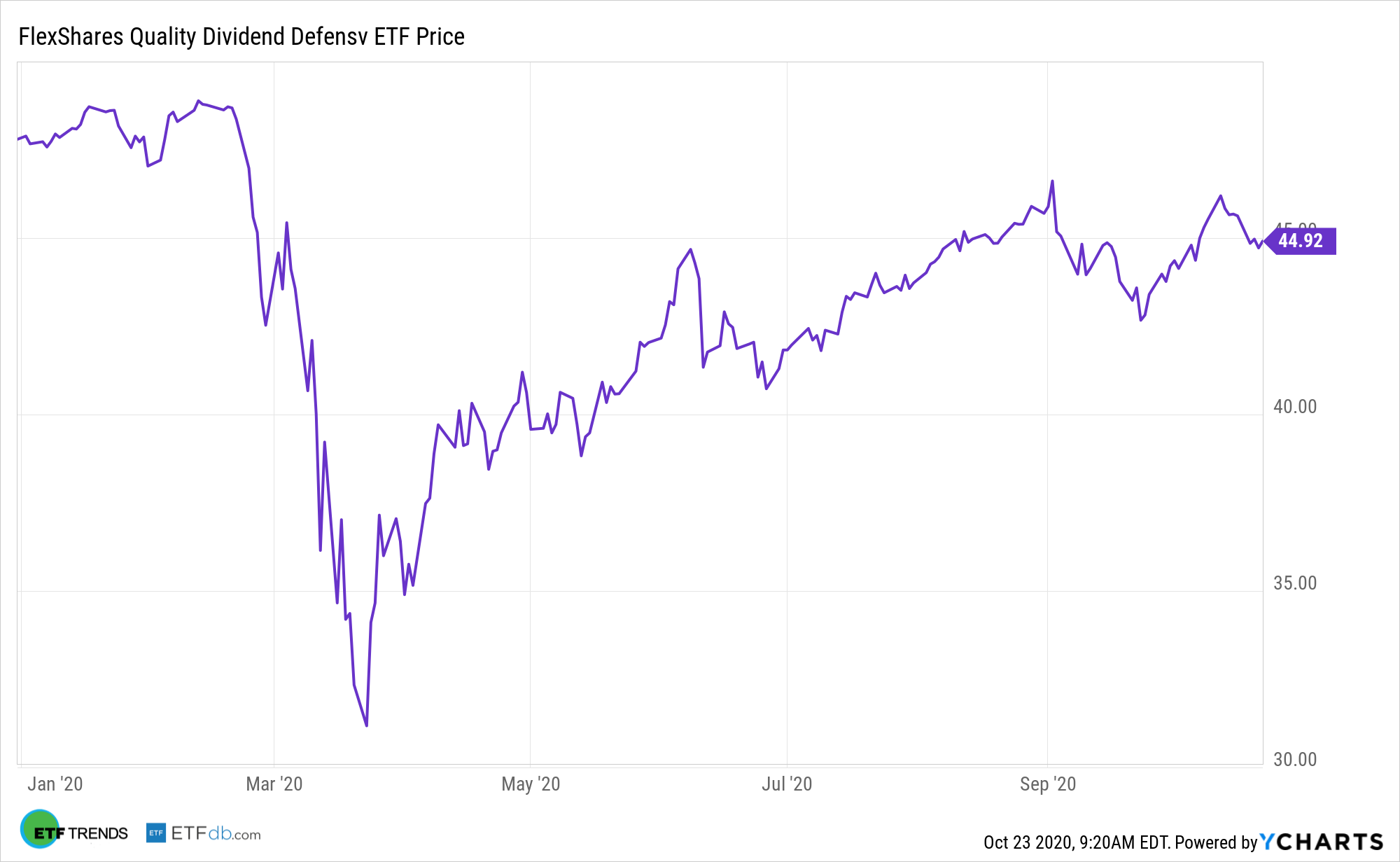Dividends still matter. So does the quality backing those payouts. Both traits can be found in the FlexShares Quality Dividend Defensive Index Fund (NYSEArca: QDEF).
QDEF’s underlying index is designed to reflect the performance of a selection of companies that, in aggregate, possess greater financial strength and stability characteristics relative to the Northern Trust 1250 Index, a float-adjusted market-capitalization weighted index of U.S. domiciled large- and mid-capitalization companies. The fund will invest at least 80% of its total assets (exclusive of collateral held from securities lending) in the securities of the underlying index.
Dividends “provide tangible returns that cannot be taken away. This is unlike unrealized losses or gains that can wildly swing with the movements of the markets,” according to Seeking Alpha.
QDEF’s Relevance in Today’s Market
QDEF’s emphasis on dividend growers is particularly relevant in today’s market environment. Dividend-growing companies are also high quality names. Steady dividend payouts have also helped produce improved risked-adjusted returns over time.
The high-quality focus may also help dividend growers outperform or do less poorly than the broader markets during weaker periods. QDEF is also relevant because of the Federal Reserve’s low interest rate policy.
“Low rates have a strong impact on pushing capital from the sidelines to work. Banks and financial institutions lend more freely to keep their profits rolling in. In turn, rates on mortgages and Treasury notes remain low, reducing expenses for average Americans and also reducing the appeal of the ‘lowest risk’ route to returns,” notes Seeking Alpha.

FlexShares’ quality dividend indexing methodology targets management efficiency or quantitative evaluation of a firm’s deployment of capital and its financing decisions. By using a management efficiency screen, the index can screen out firms that aggressively pursue capital expenditures and additional financing, which typically lose flexibility in both advantageous and challenging partitions of the market cycle.
Dividends have added significantly to returns over time, contributing approximately 32% of the S&P 500’s total return since 1960. During the return-challenged 1970s, dividends made up nearly three-quarters of S&P 500 returns – while investors earned a cumulative total return of 77% from the S&P 500 in that decade, 60% of that 77% was from dividends.
“Dividends can not only provide the income you need day to day, or month to month, they also give you capital to readily reinvest. During dips, you have the ability to decide to hoard cash, take it for expenses, or actively reinvest your dividends into new positions,” reports Seeking Alpha.
For more on multi-asset strategies, please visit our Multi-Asset Channel.
The opinions and forecasts expressed herein are solely those of Tom Lydon, and may not actually come to pass. Information on this site should not be used or construed as an offer to sell, a solicitation of an offer to buy, or a recommendation for any product.

